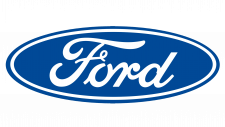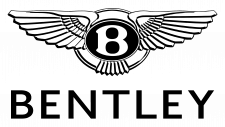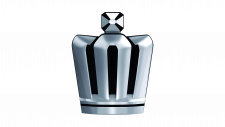FIAT Logo
Fiat, originally from Italy, is a renowned automaker now integrated into Stellantis, a multinational formed in 2021. This merger united Fiat Chrysler Automobiles and PSA Group. Focusing on producing a diverse range of vehicles, from compact cars to commercial vehicles, Fiat continues to thrive in European markets and expands globally. Known for innovation and style, the brand has a strong presence in Latin America and parts of Asia. Stellantis oversees its operations, driving synergy across multiple automobile brands, ensuring Fiat’s sustained growth and adaptability in the ever-evolving automotive industry.
Meaning and history
Fiat, standing for Fabbrica Italiana Automobili Torino, embarked on its journey in 1899 in Turin, Italy, under Giovanni Agnelli’s leadership. Initially, its focus was on producing cars locally, but by the 1910s, the company broadened its horizon, establishing plants in the US and Russia.
The post-war era marked a pivotal shift. The launch of the Fiat 500 in 1957, a compact, affordable car, garnered immense popularity. As global expansion beckoned, the 1960s and 1970s saw Fiat acquiring brands like Lancia, Ferrari, and Alfa Romeo, bolstering its position in the market.
However, the 1980s brought challenges. Economic downturns and rising competition demanded adaptation. Fiat responded with innovative models like the Fiat Uno. By the 2000s, with an emphasis on strategic alliances, Fiat entered into a significant partnership with Chrysler in 2009, leading to the creation of Fiat Chrysler Automobiles (FCA) in 2014.
2021 marked another significant transition. Merging with PSA Group, the FCA birthed Stellantis, a conglomerate commanding several leading auto brands. Throughout its voyage, Fiat remained a symbol of Italian design and innovation, constantly evolving amidst the shifting terrains of the automobile industry.
1899 – 1901
In the inaugural year of its establishment, the budding car manufacturer had yet to introduce its distinct logo. However, a symbolic emblem was crafted, bearing a resemblance to aged manuscript with its golden rectangular design and “rounded” corners. The center boasted the grand title “Fabbrica Italiana di Automobili Torino,” with its concise acronym, Fiat, boldly displayed. This design symbolized the brand’s heritage and vision, laying a foundation for the iconic identity the company would later adopt in the automotive realm. The emblem became an instant representation of Italian craftsmanship and innovation, setting the stage for the company’s future endeavors and milestones.
1901 – 1903
The initial emblem had a brief lifespan. By 1901, lead designer Mario Majoli, while passing the plant during dusk, was captivated by the avant-garde silhouette of the structure against the twilight backdrop. This observation became the catalyst for devising the firm’s premier insignia. The plaque, coated in a deep blue hue, showcased solely the company’s acronym, spacing out the four characters distinctly. The design possessed a rectangular contour, with its top edge subtly extended. Intriguingly, the typography chosen for this pioneering emblem eventually emerged as the hallmark font of FIAT, solidifying its identity in the annals of automotive branding.
1903 – 1908
The designers decided to streamline the visual elements. The alphabets retained their original charm, especially the distinct “A” with its extended form. The color scheme remained consistent with the previous version, maintaining the azure backdrop juxtaposed against the prominently accentuated alphabets. This iteration reflected a blend of tradition and modernity, ensuring that while the brand evolved, it never lost sight of its roots. The continuity in design elements reinforced the brand’s identity, making it easily recognizable while still embracing the subtleties of contemporary design aesthetics. Through these nuances, the emblem echoed the company’s commitment to both legacy and innovation.
1908 – 1921
In 1908, the insignia underwent a transformation, exuding more sophistication. Designers positioned the customary abbreviation within a horizontally oriented azure ellipse. This rendition of the logo boasted a more adaptable appearance, with the characters prominently shining against the deep cerulean backdrop. The elliptical frame gave it a modern touch while accentuating the central letters, amplifying their prominence. This evolution represented the brand’s adaptability, seamlessly merging traditional elements with fresh design perspectives, ensuring the emblem stood out and left an enduring impression, all while retaining the essence of its original identity.
1921 – 1925
In 1921, Fiat underwent a total emblematic transformation. The brand introduced a pristine, symmetrical circle encased by an ornate laurel garland. The choice of the laurel wasn’t arbitrary; it symbolized their automobiles’ frequent victories in numerous racing contests during that era. The typeface adopted a fiery red hue against a pure white canvas. This dichromatic theme exuded a sense of strength and assertiveness. The design was not just an aesthetic upgrade but a reflection of the brand’s achievements and burgeoning reputation in the automotive world. The laurel’s incorporation celebrated their excellence, hinting at both their historical successes and their aspirations for future triumphs.
1925 – 1929
In 1925, subtle modifications were introduced to the logo’s design. The intricacies of the laurel were toned down, making the wreath more emblematic in nature. A deep navy hue was selected as the backdrop, providing a stark contrast. Against this rich backdrop, the ‘Fiat’ inscription was rendered in a pristine white, creating a striking visual effect. This adjustment not only enhanced the brand’s visual appeal but also signified a combination of tradition and modernity. The contrast between the deep blue and pure white symbolized the company’s commitment to innovation while honoring its storied past. The revised design was both elegant and indicative of the brand’s evolving identity.
1929 – 1931
Up to 1931, only subtle tweaks were implemented in the logo, predominantly relating to its color palette. The Fiat symbol persisted in its elegance, boasting a metallic-hued border adorned with leaf motifs and distinctive typography. Throughout this period, while the core essence of the logo remained consistent, these nuanced color adjustments showcased the brand’s attention to detail. These alterations, though minor, highlighted Fiat’s dedication to refining and perfecting every element, ensuring its identity resonated with its evolving audience. Such refinements, even if primarily in the hue spectrum, showcased a company that was continually progressing, yet anchored in its foundational design principles.
1931
On this occasion, the backdrop hue of the emblem underwent a transformation. The serene “azure sky” tone was swapped out for a triumphant red, symbolizing success and accomplishment. This bold shade of red not only represented victory but also infused the logo with a renewed energy and passion. The shift in color, while seemingly simple, carried significant symbolic weight, underscoring the brand’s achievements and its forward momentum. Such a color transition not only refreshed the emblem’s look but also conveyed a message of triumph, resilience, and determination, demonstrating the brand’s evolution and its continuous drive towards excellence.
1931 – 1932
In 1931, a substantial transformation occurred with the logo. As Fiat cars underwent modifications in their radiator designs, the emblem’s structure also experienced a revamp. The decision was made to eliminate extraneous elements, particularly those resembling laurels. The distinctive “Fiat” typography underwent a significant vertical elongation. The emblem’s contour evolved into a rectangle with soft, curved edges, echoing the design of a car’s radiator grille. Amidst these alterations, one constant element persisted: the deep shade of crimson serving as the backdrop, symbolizing the brand’s enduring legacy and passionate drive. This redesign reflected the brand’s adaptation to changing times while retaining its core identity.
1932 – 1938
It’s evident that while the core essence of the emblem remains intact, the previously rounded edges have been transformed into a defined rectangular form. This transition symbolizes a shift towards a more modern and structured approach, embracing clarity and precision. This seemingly minor adjustment, in fact, subtly conveys the brand’s adaptability and commitment to evolution. Such minute changes reflect an understanding of the ever-evolving design landscape and the need to strike a balance between preserving legacy and adapting to contemporary aesthetics. It’s a testament to the brand’s nuanced approach to design and its ability to integrate tradition with innovation.
1938 – 1949
The emblem transformed into a badge-like design, seamlessly integrating with the aesthetics of the company’s race cars and enhancing the appearance of every radiator grille. This badge, with its distinctive upper graphic, exudes a refined and stylish charm. For nearly four decades, up until 1968, this symbol graced vehicles with only slight alterations, maintaining its original hues and, notably, its signature typography. This period witnessed a testament to the emblem’s timeless appeal and the brand’s commitment to consistency, subtly blending tradition with the evolving trends of automotive design. Such longevity in design speaks to the brand’s deep understanding of its identity and the value of enduring aesthetics.
1949 – 1959
In this iteration, we’ve streamlined the emblem’s contours, opting for crisper and more linear edges. The in-house typography subtly narrows down towards its base, echoing the shield’s distinctive form. The fusion of deep crimson and shimmering silver bestows the logo with a sense of gravitas and a hint of boldness. This pairing of colors, combined with the refined design elements, reflects a synergy of tradition and modernity. The evolution of the emblem not only represents the brand’s journey but also showcases a forward-thinking approach while staying rooted in its foundational aesthetics. It’s a harmonious blend of the old and the new, capturing the essence of the brand’s dynamic spirit.
1959
The silhouette of the shield has been refined with more gentle, curved edges. Encasing the logo is a robust metallic border, adding a touch of elegance. The letter ‘A’, with its sharp apex, introduces a touch of finesse to the entire symbol. This evolution of the design adds a contemporary flair while retaining its timeless appeal. The blend of classic and modern elements provides a fresh perspective, mirroring the brand’s ability to evolve while staying true to its core values. It’s more than just a logo; it’s a testament to the brand’s enduring legacy and its commitment to innovation and excellence. The intricate detailing and thoughtful design choices culminate in an emblem that is both captivating and emblematic of the brand’s essence.
1959 – 1968
The contour of the shield has evolved to be less distinct and forceful. The broad metallic trim, coupled with its almost curvaceous edges, bestows the badge with a gentler aura. This transformation captures a more approachable and friendly vibe, moving away from its earlier formidable look. Such alterations showcase the brand’s adaptability, aiming to connect more with a broader audience. This emblem, with its nuanced changes, communicates a message of warmth, progression, and modernity, subtly emphasizing the company’s continuous journey to refine its identity and cater to changing consumer preferences. The deliberate choice to blend both strong and tender elements creates an emblem that resonates with varied tastes and times.
1965 – 1982
The circular emblem evokes the feel of a stamp, taking inspiration from the traditional rondel design. At its heart lies the vehicle brand’s name, elegantly scripted in Verkehr Std Bold. These towering yellow characters, with extended bases and a crisp white outline, stand out prominently. Notably, the letter “A” boasts a distinctively snipped upper-right corner. Set against this is a modest crimson disc. Encircling this disc is a delicate luminous border. Similar lines are tastefully positioned above and below the brand’s name, enhancing its stature. Bordering the entire design is a broad slate band, adorned with a garland of laurel leaves, rendered in a deep charcoal hue, symbolizing victory and prestige. The entire assembly creates a harmonious blend of tradition and modernity, echoing the brand’s legacy and forward-looking aspirations.
1968 – 1972
In 1968, the emblem experienced a transformative redesign. The brand’s typeface was given a fresh update. The new representation was more structured, leaning towards geometrical precision. It showcased a quartet of rhombuses, delineated by crisp white divisions. Every character from the name “FIAT” was elegantly housed within its distinct compartment, rendered in a sharp, proper italic style. This particular rendition stood the test of time and became an iconic representation for the brand. Many, to this day, regard this as one of the most exemplary and aesthetically pleasing designs in Fiat’s illustrious history. The balance between sophistication and modernity in this design resonates with many aficionados and enthusiasts, marking a significant chapter in the brand’s evolution.
1972 – 2003
The hue of the diamond shapes underwent a transformation. Instead of their previous shade, they adopted a traditional deep sea blue. This subtle shift in color palette added a touch of elegance and depth to the overall design. The choice of navy blue, often associated with sophistication and trust, brought a certain gravitas to the emblem. Such modifications, while seemingly minute, play a pivotal role in brand representation and perception. Over the years, color choices can reflect a brand’s evolving identity, aspirations, and the image they wish to project to their audience. In this case, the transition to a classic navy blue denotes Fiat’s continual journey towards excellence and refinement, subtly signaling a blend of tradition with contemporary aesthetics.
1982 – 1991
The diamond patterns transitioned to five elongated lines, imperfect in their parallelism, slanting slightly to the left, reminiscent of an italic typeface. This new design evokes a sense of dynamism and forward momentum, hinting at the brand’s progressive outlook. The slanted lines, akin to italicized script, indicate a touch of elegance and distinctiveness. This change, though seemingly simple, adds layers of interpretation, emphasizing movement, innovation, and growth. With each design evolution, there’s an underlying story or intent, and in this instance, the tilted lines subtly convey the brand’s commitment to pushing boundaries and venturing into new horizons, all while maintaining its signature elegance.
1991 – 1999
The creative team revamped the color palette, introducing a touch of blue between the lines. This azure spacing breathes fresh life into the design, evoking feelings of expansiveness and freedom. The introduction of this blue hue, reminiscent of clear skies and vast oceans, seamlessly interweaves with the existing stripes, highlighting the brand’s commitment to innovation while paying homage to timeless elegance. Every shade in a design has a story, and here, the blue symbolizes not just serenity but also endless possibilities, suggesting the brand’s continuous journey towards growth, exploration, and breaking new grounds. The clever use of this color gradient reinforces the message of transformation and evolution, aligning with the brand’s vision for the future.
1999 – 2003
Once more, the design journey circled back to the diamond motif. This time, however, a refreshing blend of blue and white infused the logo with a contemporary, airy feel. Each diamond now gleams with a luminous highlight at its apex. The Fiat inscription has been revamped with a robust sans-serif font, granting it prominence and distinction. The refined lettering, combined with the vibrant colors, reflects the brand’s evolution and adaptability. This innovative design encapsulates the brand’s legacy while paving the way for the future, resonating with both loyal enthusiasts and a new generation of admirers. The perfect fusion of tradition and modernity ensures that the emblem remains both iconic and forward-looking.
1999 – 2006
In 1999, a wave of nostalgia swept over the designers, prompting them to revisit the past and resurrect the circular emblem from yesteryears. Marking the brand’s centenary, the team aimed to recreate the charm of the 1920s-era logo. However, this iteration spotlighted blue as its dominant hue. The revamped symbol boasted a cerulean backdrop complemented by lustrous chrome lettering, with the letter “A” revisiting its authentic design. The silvery tone endowed the text with depth, making it pop with brilliance. An elegantly redesigned laurel wreath encircled the brand name, paying homage to its rich history. Yet, this emblematic blend of past and present graced the brand for a mere year before another evolution beckoned.
2001 – 2006
Preserving the emblem’s round configuration, the designers transitioned to a richer shade of navy for the backdrop, introducing an air of elegance and depth. The textual elements and the encompassing borders were reimagined in a luminous shade of sterling white. This alteration not only elevated the emblem’s aesthetic appeal but also rendered it a perfect blend of tradition and modernity. The stark contrast between the intense blue and the radiant white provided a visual allure that was hard to miss. This thoughtful design decision illuminated the brand’s commitment to evolution while respecting its heritage. The choice of these colors reflected both sophistication and clarity, resonating with the brand’s vision and identity. The updated design exuded a sense of timeless elegance, capturing the essence of the company’s journey and aspirations.
2003 – 2006
The company embarked on a fresh design journey, unveiling a distinctive visual identity. Each of the four letters, representing the brand’s abbreviation, shone in a vivid shade of cerulean. Yet, amidst this transformative approach, the essence of the original typeface remained intact. This decision to retain the signature font style, while introducing vibrant hues, beautifully encapsulated the brand’s essence: a blend of tradition and innovation. The bright blue not only captured attention but also symbolized the company’s forward-thinking approach and dynamic evolution. The design struck a harmonious balance, paying homage to its roots while signaling a new era of growth and creativity. With this revamped appearance, the brand effectively communicated its commitment to evolution, without losing sight of its storied heritage.
2006 – 2022
In 2006, the creative team at the company embarked on a journey to rejuvenate the brand’s emblem, infusing it with depth and integrating shimmering silver hues.
Marrying two distinct emblematic shapes – the circular and the thyroid – they sculpted a unique identity. This emblem was then framed within a metallic silver ring, featuring a rectangular centerpiece flanked by half-moon edges, resulting in an illusion of depth and dimensionality. The brand’s moniker was elegantly etched in gleaming silver against a vibrant crimson backdrop. These refined, stretched-out letterforms, though reminiscent of a time-honored typeface, were now revamped to exude modernity and finesse. This innovative approach ensured the logo was not only in sync with contemporary design aesthetics but also anchored in its rich heritage, striking a balance between the past and the present. This seamless blend showcased the brand’s ability to evolve while respecting its foundational elements.
2022 – Today
In the revamped 2020 design, the foundational elements of the Fiat emblem and its iconic typeface remained, but with a contemporary twist. The lettering underwent a process of streamlining, resulting in more linear, refined contours. The color scheme was elevated to a rich shade of ruby red. This fresh blend exudes elegance and dynamism, encapsulating the brand’s fiery spirit and unwavering vigor. It further underscores the brand’s meticulousness and their undying appreciation for aesthetic excellence.
Across different versions, there’s an evident thread of consistency. This cohesion ensures that while the brand evolves, it never loses sight of its roots, ensuring a harmonious blend of tradition and modernity, weaving the past with the present, creating a legacy for the future.




































